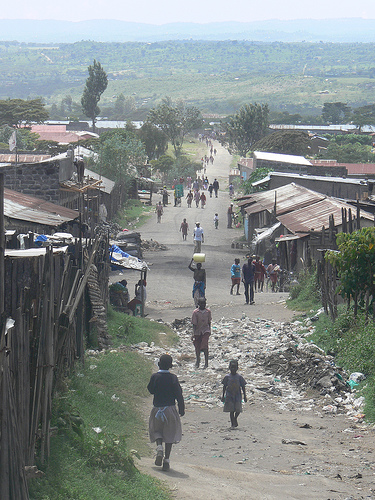 When you travel with your children, especially internationally, there will come a day when your son or daughter will ask about the differences between the level of comfort they’re used to in their own home and poor living conditions they may see when you are traveling. It’s a difficult question to answer. How you respond will help shape your child’s view of the world.
When you travel with your children, especially internationally, there will come a day when your son or daughter will ask about the differences between the level of comfort they’re used to in their own home and poor living conditions they may see when you are traveling. It’s a difficult question to answer. How you respond will help shape your child’s view of the world.
Toddlers are too young to notice or understand the concept of poverty but by elementary school, most children start learning about larger issues, including the wide financial gap. Some schools even promote charity fundraising that helps disadvantaged children at home or abroad. Kids this age can understand the value of collecting diapers or peanut butter for peers in their own city. If you’re headed to a developing country, start talking about societal disadvantages and preparing your child for what she might see before your trip. This will help her become an empathetic and concerned citizen.
David J. Smith’s book, If the World Were a Village: A Book About the World’s People (illustrated by Shelagh Armstrong), is a very powerful tool for helping children understand the economic complexities. He explains how the different communities around the globe can be represented in one 100-person village. The message is poignant and very easy to understand.
When discussing these differences, remember the following:
1. Don’t ignore the topic, but do make it easy to understand. Your child will need an answer—one that makes sense to a child’s view of the world.
2. Present the information in a way that doesn’t sermonize, so that she will stay interested.
3. Be flexible in your travels, in case you need to change your plans. If your child sees others her age destitute or begging, it may be too much to process. Consider rerouting to more developed regions or, if the experience is still too traumatic, leaving the country altogether.
As your children get older, consider volunteer vacations with organizations such as Global Volunteers and Global Buddies. These organizations arrange activities for adults and children and often assist people in disadvantaged regions, whether in North America or abroad. These programs are generally open to children as young as eight who are accompanied by an adult.
While every child will respond differently, following these few tips will be a good start for kids of any age and maturity level.
Village street photo: claire_murphy10


